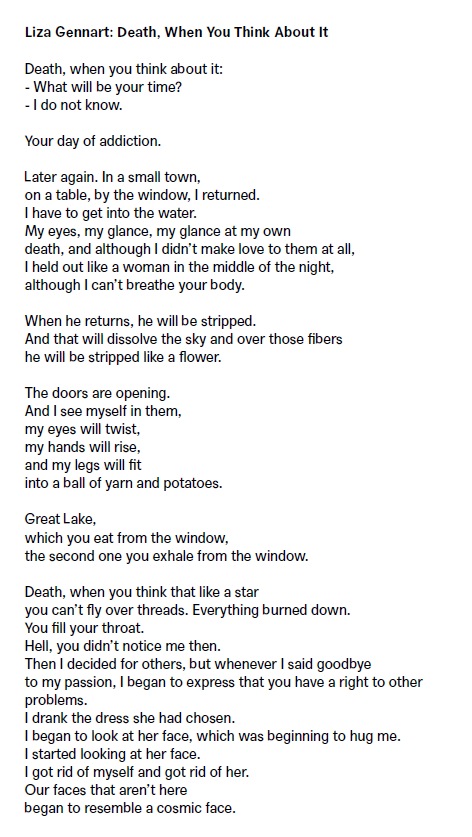Death, when you think about it
Don’t worry about invoking death by speaking or reading about it – this is a message relayed by many peo- ple with terminal illnesses. And they’re right. An interest in our own demise and the departure of others can be a starting point for preparing to end our life mindfully; for detaching ourselves from this world responsi- bly. If we have not yet arrived at the decision to turn our remains into beneficial compost (an excellent idea, by the way), we need only overcome the taboo constructed by modernism and stop feeding it by continuing to avoid speaking about death.
The taboo deepens the chasm between the living and those experiencing loss. The fear of speaking can paralyze the entirety of that most sensitive period of life into a kind of flat, mutually isolating fog. Let us include in our personal politics and in the politics of the state the principle of compassion, which will help us avoid perceiving death as the failure of medical science and life functions, seeing it as a part of life instead.
There is much knowledge and experience that we can share. And that is the central motivation of this issue of the magazine. To think through the issues of the death of the individual but also the death of par- ticular phenomena, like data, for instance, or the end of digital life, or death in relation to politics (as in the case of the artistic activism of the Party of the Dead in Russia). At the turn of the analog and digital eras, the things we commonly associate with death – motifs of funerals, coffins and crosses – seems much closer to previous centuries. What is contemporary death like? What does it look like? What are its imperfections? What could it or should it be like? And what role does photography play in relation to death and the preser- vation of memories? Can we glimpse the new digital consequences whose solutions stand in front of us and are as yet unanchored?
The period of modernism is often referred to as the “age of concealed death”, when dying was dele- gated from homes into institutions. As Carl Öhman mentions in our interview with him, this era is ending thanks to the arrival of technologies that bring the dead back into public spaces through digital traces and social networks. We are witnessing the definitive end of concealed death, which is why it is necessary to consider the meaning and conditions of death’s new presence.



#38 death, when you think about it
Archive
- #45 hypertension
- #44 empathy
- #43 collecting
- #42 food
- #41 postdigital photography
- #40 earthlings
- #39 delight, pain
- #38 death, when you think about it
- #37 uneven ground
- #36 new utopias
- #35 living with humans
- #34 archaeology of euphoria
- #33 investigation
- #32 Non-work
- #31 Body
- #30 Eye In The Sky
- #29 Contemplation
- #28 Cultura / Natura
- #27 Cars
- #26 Documentary Strategies
- #25 Popular Music
- #24 Seeing Is Believing
- #23 Artificial Worlds
- #22 Image and Text
- #21 On Photography
- #20 Public Art
- #19 Film
- #18 80'
- #17 Amateur Photography
- #16 Photography and Painting
- #15 Prague
- #14 Commerce
- #13 Family
- #12 Reconstruction
- #11 Performance
- #10 Eroticon
- #9 Architecture
- #8 Landscape
- #7 New Staged Photography
- #6 The Recycle Image
- #5 Borders Of Documentary
- #4 Intimacy
- #3 Transforming Of Symbol
- #2 Collective Authorship
- #1 Face
